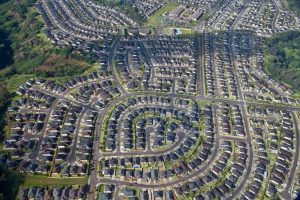
What Is Urban Sprawl and How Do We Manage It?
Australia is a huge country with a very small population in comparison to its size, with the majority of people residing in large cities along the coastline, mostly along the southern areas of the Eastern Seaboard. While Australia’s population is a relatively comfortable 25 million now, it’s increasing rapidly, and the projected population growth will result in even further urban sprawl unless better urban and regional planning is implemented.
Sydney and Melbourne are currently the two cities most affected by urban sprawl, but with Brisbane, Perth and Adelaide’s populations also rising rapidly, urban sprawl will prove to be a major issue in these cities as well. Immigration is often blamed for the increased populations in major cities, but increased immigration rates can’t account for the sprawling (and constantly expanding) suburbs that are a common sight in all Australian cities.
In fact, immigrants (and Australian nationals from other states) account for only a small percentage of Sydney and Melbourne’s annual population increases, which are currently at 1.7% and 2.1% respectively and the highest in the country, according to a recent study by The University of Sydney. Much of the population growth in Australian cities reflects the shift of the economy from agriculture, mining and regional-based industries to service and knowledge-centric activities which tend to be clustered in cities.
“These rates of growth are very unusual for western cities,” said Peter Phibbs, Professor of Urban Planning, School of Architecture, Design and Planning in relation to the study, “As the country’s mining boom slows and Australia’s economy continues to shift towards service and knowledge-intensive activities, these cities are likely to increase in popularity.”
What Can Be Done About It?
Is urban sprawl inevitable or is there something that town planners and policymakers can do about it? While we can expect urban sprawl to be an issue for many years to come, it isn’t an issue that’s being overlooked, and government at local, state and federal levels are looking for solutions to the multitude of issues that it presents. While research shows that urban sprawl is slowing, not increasing, in Melbourne, Sydney, Brisbane and Perth, it’s obvious that more needs to be done to accommodate future population growth, such as:
- Mixed-use developments: A mixed-use development is a combination of commercial and residential spaces that allow for more pedestrians, cyclists and public transport. This is a smart alternative to isolating residential areas away from the CBD in the suburbs which force more people to commute to work, clogging main roads and increasing traffic and pollution
- Community action: Local communities affected by urban sprawl should consider working more closely with their local government to implement better urban design and town planning to reduce local traffic and limit housing developments in the most densely populated areas.
- Smarter planning: At Arnold Development Consultants, we believe a combination of good government policy and innovative town planning and urban development are the solutions the country needs to address the growing issue of urban sprawl in Australian cities and continue to provide Australians living in major cities with high living standards. To discuss your project or speak with a town planning consultant, contact ADC today.



